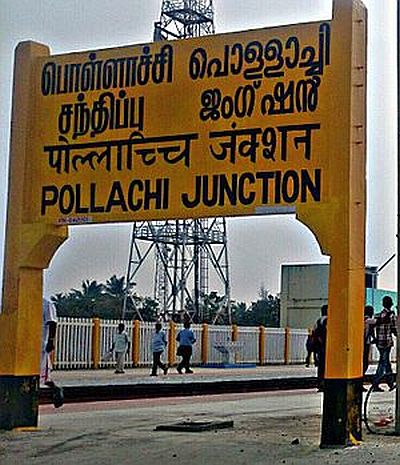There are a number of unusual languages which you could see on station signs in India, ranging from Dogri to Maithili to “Manipuri” to Ol-Chiki, which you can read about here:
But there were no signs in Sanskrit until now.
A little background first. Uttar Pradesh has had Hindi as well as Urdu as official languages for a long time. They had the status of co-official languages since 1989.
Sanskrit has been declared an official language in Uttarakhand as well as Himachal Pradesh. The latter state does not seem to have done much about introducing Sanskrit in signs, but Uttarakhand has.
Official languages in different states can be seen here:
And this news item from Uttarakhand:
The replacement of Urdu by Sanskrit in station signs has started. We first look at the state capital:


And another important town:


Rishikesh goes a step further. First the original sign:

A new station will be opened shortly as part of the proposed new line to Karnaprayag. The original name was planned to be New Rishikesh:

But it is now going to be:

Not sure if Yogi Adityanath has anything to do with it, although he was originally from Pauri Garhwal district in Uttarakhand. Anyway, this is what the new station looks like.
And this new design of a station sign seems to use more material and space.
Another interesting point is that the Sanskrit inscription is on top unlike in the signs of Dehradun and Haridwar.
In Lalkuan, “Junction” has been Sanskritized:

It is the normal practice to have the main local language on top followed by English and Hindi, as you can see here:



Does it mean that Sanskrit has more importance than Hindi in Uttarakhand? However, one can see that there is a lot of inconsistency in such matters.
There are numerous examples of places in India which carry languages of other states:
5 languages in this one in Karnataka:

Also in Telangana:

Numerous examples of signs with 4 languages, which include those of neighbouring states:

In Kerala-Tamil in the second row.

In Tamil Nadu-Malayalam on the right side.

In Bihar -Urdu still has official status, with Bengali also there:

Jharkhand -includes Odiya and Bengali

Also in Jharkhand, with Urdu and Bengali (Above and below):


Also in Jharkhand: Bengali was in the old sign but not in the new sign.
Do you see any consistency 🙂
Finally, Himachal Pradesh also has Sanskrit as its official language. But they are not interested in changing the signs. And they have not deleted any language which was already there:


The “official” version can be seen in this news report. But the Sanskrit signs have appeared anyway before the writer noticed them.









